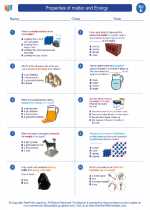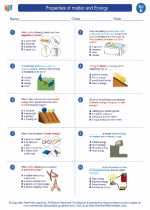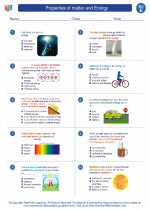Properties of matter and Energy -> celestial bodies
Celestial Bodies
Celestial bodies are natural objects in the sky, such as the sun, moon, stars, and planets. They are a fundamental part of our universe and have been studied by scientists and astronomers for centuries.
Types of Celestial Bodies
There are several types of celestial bodies, including:
- Stars: These are massive, luminous spheres of plasma held together by gravity. The sun is a star, and there are billions of other stars in the universe.
- Planets: Planets are large celestial bodies that orbit around a star. They do not produce their own light but reflect the light of the star they orbit.
- Moons: Moons are natural satellites that orbit around planets. They vary in size and composition and are often influenced by the gravitational pull of their parent planet.
- Asteroids: These are small, rocky objects that orbit the sun, primarily found in the asteroid belt between Mars and Jupiter.
- Comets: Comets are icy bodies that orbit the sun and develop a visible coma (a fuzzy outline) or a tail when they are close to the sun.
Studying Celestial Bodies
Scientists study celestial bodies using various tools and techniques, including telescopes, spectroscopy, and space probes. By studying celestial bodies, scientists can learn about the formation and evolution of the universe, as well as gain insights into the fundamental laws of physics.
Key Concepts to Remember
- Gravity: The force that attracts celestial bodies toward each other.
- Orbit: The path that a celestial body follows as it revolves around another body in space.
- Luminosity: The total amount of energy emitted by a celestial body per unit of time.
- Galaxies: Vast systems of stars, gas, and dust bound together by gravity.
Study Questions
- What are the different types of celestial bodies?
- How do scientists study celestial bodies?
- Why are celestial bodies important for understanding the universe?
By understanding the properties and behaviors of celestial bodies, we can gain a deeper appreciation for the vastness and complexity of the universe.
.◂Science Worksheets and Study Guides Fifth Grade. Properties of matter and Energy
Study Guide Properties of matter and Energy
Properties of matter and Energy  Worksheet/Answer key
Worksheet/Answer key Properties of matter and Energy
Properties of matter and Energy  Worksheet/Answer key
Worksheet/Answer key Properties of matter and Energy
Properties of matter and Energy  Worksheet/Answer key
Worksheet/Answer key Properties of matter and Energy
Properties of matter and Energy  Vocabulary/Answer key
Vocabulary/Answer key Properties of matter and Energy
Properties of matter and Energy  Vocabulary/Answer key
Vocabulary/Answer key Properties of matter and Energy
Properties of matter and Energy 

 Worksheet/Answer key
Worksheet/Answer key
 Worksheet/Answer key
Worksheet/Answer key
 Worksheet/Answer key
Worksheet/Answer key
 Vocabulary/Answer key
Vocabulary/Answer key
 Vocabulary/Answer key
Vocabulary/Answer key

The resources above cover the following skills:
PHYSICAL SCIENCE (NGSS)
Matter and Its Interactions
Students who demonstrate understanding can:
Develop a model to describe that matter is made of particles too small to be seen.